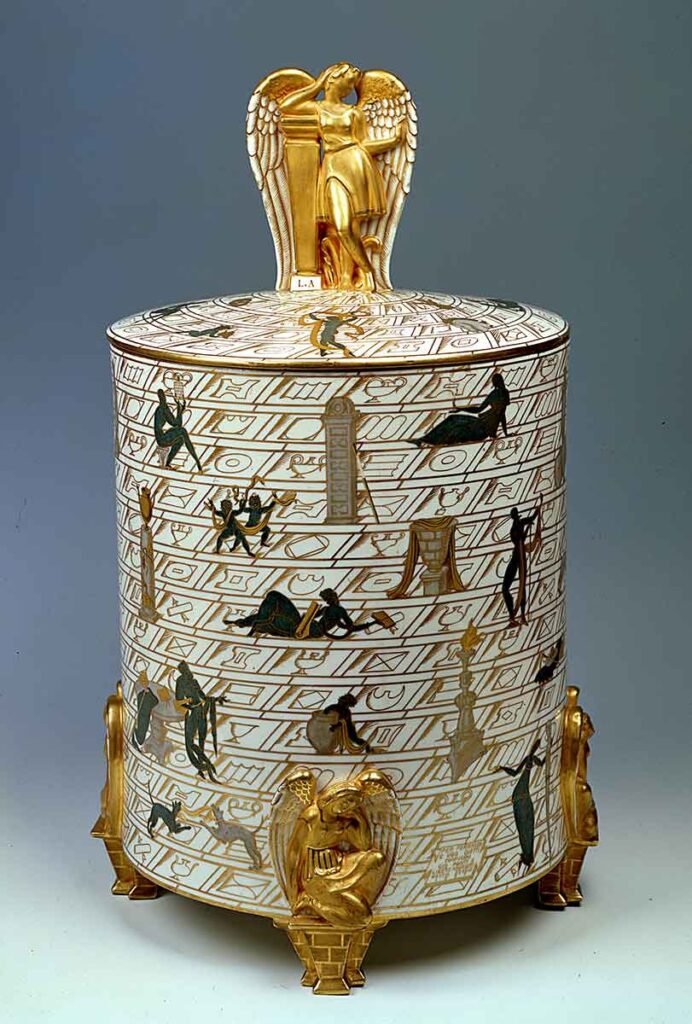Cista “The Classical Conversation”
Manifattura di Doccia , 1926-1927
Description

In 1896 with the merging of the Ginori Manufactory with the Milanese company Richard, the Ceramic Company Richard Ginori was born, continuing its activity in Doccia.
In 1923 the architect and designer Gio Ponti became artistic director of the Richard Ginori manufactory and thanks to his plan of renovation its production became most popular in Italy and abroad. In 1925 Ponti’s ceramics were awarded the Grand Prix at the Decorative Art Exhibition in Paris and in the same year the influential critic and journalist Ugo Ojetti commissioned to the Doccia manufactory two porcelain cistae to celebrate his wedding anniversary.
The cistae designed by Gio Ponti were inspired by the Etruscan cistae, cylindrical lidded vases used as toiletries box or jewel cases. The Cistae represented for Ojetti the evidence of how Gio Ponti was able to create a truly modern object without denying the legacy of the past but being instead inspired by it with fine irony.
The two Poldi Pezzoli items are similar in size but have a different decoration. The Archaeological Walk (inv.3357) and The Classical Conversation show both male and female figures, alternating in one case with columns, herms, and aediculae, in the other with cups, pitchers, quivers, and arrows.
The sculptor Libero Andreotti, friend and protégé of Ojetti, modelled the winged female figures set on the lids and by each foot. Ponti made some variations to customize the decoration. Among them, the depiction of the façade of the Salviatino, the Ojettis’ Florentine residence (inv.3358), and, on both vases, a scroll that reads: “For Fernanda and Ugo Ojetti composed Gio Ponti and Libero Andreotti made by Doccia”.
These vases are among the few 20th century artworks in the Museum. They represent a summa of some of the best Ponti’s inventions of those years, and the highest expression of Art Deco.
Data Sheet
Author
Manifattura di Doccia
Date
1926-1927
Material and technique
hard-paste porcelain
Measures
57cm x 34 cm
Acquisition
Paola Ojetti donation, 1973
Inventory number
3358
location
Trivulzio Room
The Trivulzio Room displays some 17th-century paintings by Italian artists as well as some furniture from different periods. The display case with archaeological weapons is a historical reminder of the room’s previous use.
collection
Ceramics
Within the Museum’s rich collection of ceramics are works of great quality executed by leading Italian – particularly Doccia and Capodimonte – and European manufactures. Among the latter, the most significant nucleus is the 18th-century Meissen porcelain, recently augmented by a generous donation from the Zerilli-Marimò collection.
